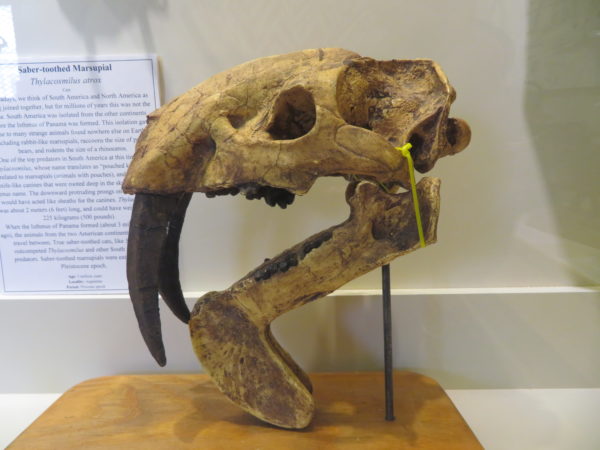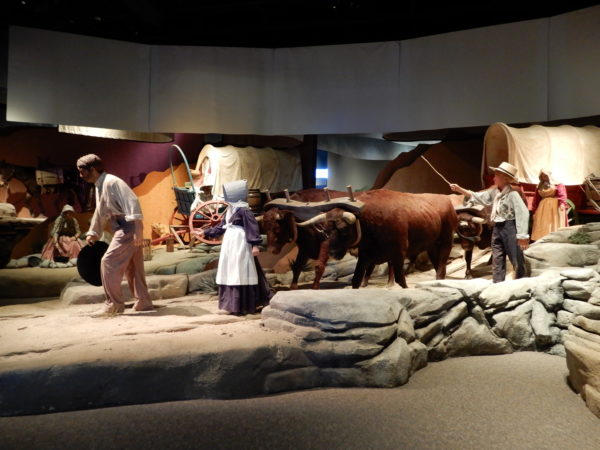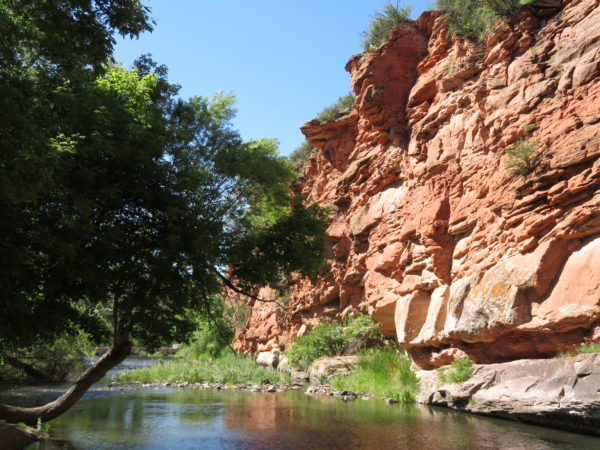May 31 – June 2, 2018
Casper is a city in central Wyoming, the second largest city in the state. It is nicknamed “The Oil City” and has a long history as an oil boomtown and cowboy center. Dave’s father was a petroleum geologist and when he worked for Conoco he moved the family there from 1956 to 1959.
Dave remembered and has pictures of the house they lived in and we decided to see if it still existed and, if so, does it look the same? He remembered the street name but not the house number and after a bit of Google searching, we were able to locate the house.
We printed pictures of the house as it looked in 1956 and knocked on the door but the current owner wasn’t home. However, as we were leaving the next door neighbor came out to see what we were up to and it turned out that, although she didn’t live there when Dave’s family did, she remembered some of the neighbors and knew one of the boys that Dave played with. After a pleasant visit we left the pictures we brought to give to the new owner and moved on to explore the town.

Dave (age 5) with his mother and sister Susan in front of their home.

Dave on the porch holding a copy of the 1956 picture of the house, The only visible changes to the home are the new color and mature landscaping.
On our way into Casper, we stopped at the visitor center and discovered a small museum and a wealth of information about the area,

Found near Casper, “Dee” is one of the largest and most complete Columbian Mammoth skeletons ever found. We certainly didn’t expect to find this in a visitor center.

 Our campground was a pleasant place on the banks of the North Platte River.
Our campground was a pleasant place on the banks of the North Platte River.
 While exploring Casper we visited the Werner Wildlife Museum and the Tate Geological Museum at Casper College. The Tate had an interesting sculpture of a T. Rex outside that when viewed from one side looked like a fleshed-out dinosaur and from the other side its skeleton.
While exploring Casper we visited the Werner Wildlife Museum and the Tate Geological Museum at Casper College. The Tate had an interesting sculpture of a T. Rex outside that when viewed from one side looked like a fleshed-out dinosaur and from the other side its skeleton.



Who knew there were saber-toothed marsupials?
That evening we stumbled upon a street party downtown that included music, vendors, food and a hula-hoop contest for kids. Dave remembers his sister Susan won a hula-hoop contest in Casper when she was about the same age as these kids. 
The following day we visited the National Historic Trails Interpretive Center. Parts of the early fur trading routes, The Oregon Trail, The Mormon Trail, The California Gold Rush Trail, and the Pony Express route all traveled through Wyoming. This Interpretive Center did an excellent job depicting the people who traversed these trails and the hardships they faced. The program started with a multi-media movie and included a virtual stream-crossing in a covered wagon, pushing a handcart across the prairie like the Mormons, and a stagecoach ride. Approximately 500,000 people passed through Wyoming on these trails.






Dave checking out a different way to camp. We don’t think we will trade in the RV just yet.
On Saturday we backtracked about 25 miles out of town to a natural stone arch formation that was quite interesting. Ayres Natural Bridge was formed over the course of millions of years when a bend of the LaPrele Creek wore through a limestone and sandstone cliff creating a natural opening, The creek eventually shifted course through the opening forming a 50-foot high and 100-foot wide arch.
The natural arch was located less than a mile south of the Oregon Trail and was often visited by emigrants traveling west, It was considered one of Wyoming’s first tourist attractions. The ill-fated Donner party is said to have visited the arch and camped downstream,



That little blue dot at the top of the picture is Dave who decided to climb the arch.


The sandstone cliffs along the creek were spectacular.



1 Comment
Susan · June 29, 2018 at 4:52 am
I see you found the address to our old house. Love that piece of history and I my first memories are from the house. Did the neighbor know about Billy Gaston?